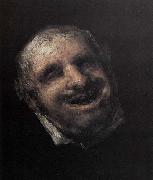Wholesale Oil Painting No Minimum |
|||||||||||
|
|
|||||||||||

|
|||||||||||
|
|
|
||||||||
Francisco de goya y Lucientesb. March 30, 1746, Fuendetodos, Spain--d. April 16, 1828, Goya is considered the 18th Century's foremost painter and etcher of Spanish culture, known for his realistic scenes of battles, bullfights and human corruption. Goya lived during a time of upheaval in Spain that included war with France, the Inquisition, the rule of Napoleon's brother, Joseph, as the King of Spain and, finally, the reign of the Spanish King Ferdinand VII. Experts proclaim these events -- and Goya's deafness as a result of an illness in 1793 -- as central to understanding Goya's work, which frequently depicts human misery in a satiric and sometimes nightmarish fashion. From the 1770s he was a royal court painter for Charles III and Charles IV, and when Bonaparte took the throne in 1809, Goya swore fealty to the new king. When the crown was restored to Spain's Ferdinand VII (1814), Goya, in spite of his earlier allegiance to the French king, was reinstated as royal painter. After 1824 he lived in self-imposed exile in Bordeaux until his death, reportedly because of political differences with Ferdinand. Over his long career he created hundreds of paintings, etchings, and lithographs, among them Maya Clothed and Maya Nude (1798-1800); Caprichos (1799-82); The Second of May 1808 and The Third of May 1808 (1814); Disasters of War (1810-20); and The Black Paintings (1820-23). |
||||||||
|
|
||||||||
Paquete
Paquete Painting ID:: 62835 |
1820 Oil on canvas, 39,1 x 31,1 cm Museo Thyssen-Bornemisza, Madrid The painting was formerly in the collection of Goya's grandson, Mariano, and before it was relined the canvas was inscribed on the back: 'El celebre ciego fijo' ('The famous blind man'). The sitter was identified as a well-known beggar who used to sit on the steps of the church of San Felipe el Real in Madrid, and was invited to play the guitar and sing in the houses of members of the court. Goya creates a vivid impression of the blind eyes and jovial expression of the old man in a style close to that of the 'black paintings'. At the same time it is remarkably similar to the manner of Velezquez in his portrayal of the facial expressions of court dwarfs. Artist: GOYA Y LUCIENTES, Francisco de Title: Teo Paquete , painting Date: 1801-1850 Spanish : portrait 1820 Oil on canvas, 39,1 x 31,1 cm Museo Thyssen-Bornemisza, Madrid The painting was formerly in the collection of Goya's grandson, Mariano, and before it was relined the canvas was inscribed on the back: 'El celebre ciego fijo' ('The famous blind man'). The sitter was identified as a well-known beggar who used to sit on the steps of the church of San Felipe el Real in Madrid, and was invited to play the guitar and sing in the houses of members of the court. Goya creates a vivid impression of the blind eyes and jovial expression of the old man in a style close to that of the 'black paintings'. At the same time it is remarkably similar to the manner of Velezquez in his portrayal of the facial expressions of court dwarfs. Artist: GOYA Y LUCIENTES, Francisco de Title: Teo Paquete , painting Date: 1801-1850 Spanish : portrait |
|||||||
|
CONTACT US |

